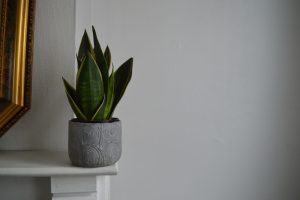If you want to make sure that what you’re eating is safe, you need to grow your own food. But this doesn’t come easy. The lack of space and extreme weather conditions can be huge problems. The solution is to build an earth-sheltered greenhouse.
There are advantages to earth sheltering combined with passive solar energy. This combination results in greenhouses that do not require extra heating.
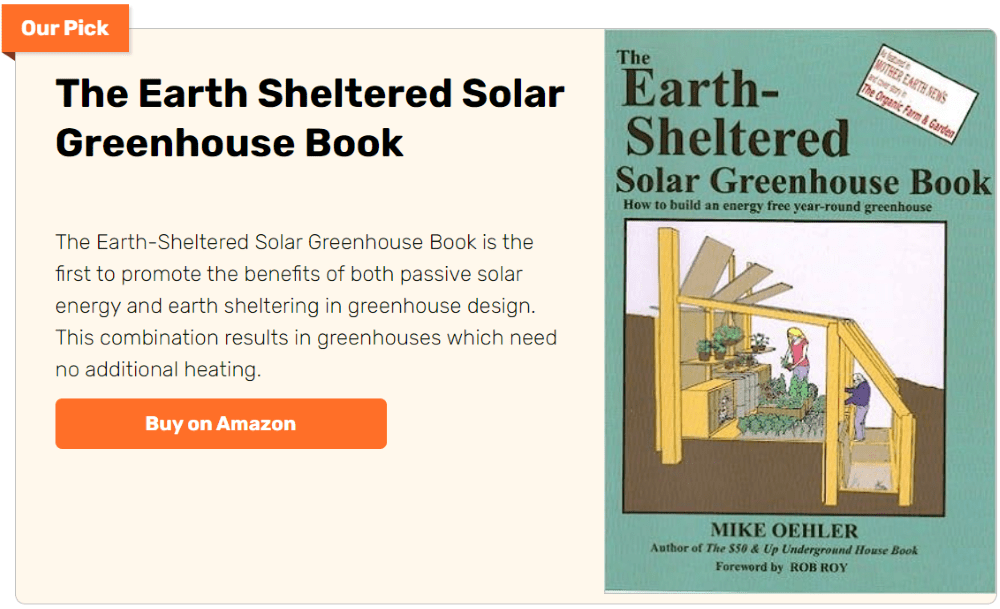
Also called an earth-sheltered greenhouse, an underground greenhouse provides numerous benefits. These structures offer consistent temperatures so it’s conducive for growing plants. They’re also good for areas where the climate can get pretty harsh. You can customize your own greenhouse to suit your specific climate and needs.
Building an earth-sheltered greenhouse will be a worthwhile undertaking. Aside from plants, you can also keep livestock in this shelter. It can be pretty versatile. Plus, because it is buried underground, it is not as exposed to the elements. This means lesser maintenance.
Earth-Sheltered Greenhouses Basics
Contents
- 1 Earth-Sheltered Greenhouses Basics
- 2 Benefits of Earch-Shelderted Greenhouses
- 3 Comparing Earth-Sheltered Greenhouses with Traditional Greenhouses
- 4 Design Considerations for Earth-Sheltered Greenhouses
- 5 FAQ on Earth-Sheltered Greenhouses
- 5.1 What is an earth-sheltered greenhouse?
- 5.2 How does an earth-sheltered greenhouse work?
- 5.3 What are the benefits of an earth-sheltered greenhouse?
- 5.4 What materials are used for insulation in earth-sheltered greenhouses?
- 5.5 How important is the location and orientation of an earth-sheltered greenhouse?
- 5.6 Can I build an earth-sheltered greenhouse on flat land?
- 5.7 What plants are best suited for an earth-sheltered greenhouse?
- 5.8 How do I ventilate an earth-sheltered greenhouse?
- 5.9 Is an earth-sheltered greenhouse expensive to build?
- 5.10 Can an earth-sheltered greenhouse be used in hot climates?
- 6 Conclusion
Greenhouses in the ground, or earth-sheltered greenhouses, offer a sustainable way to grow crops year-round, even in cooler climates. By utilizing the earth’s natural insulation and the sun’s energy, these innovative structures create an optimal environment for a variety of plants.
Let’s explore how they work and why they’re an excellent choice for gardeners looking to extend their growing seasons.
Understanding the Basics of Earth-Sheltered Greenhouses
Earth-sheltered greenhouses are designed to harness the natural resources available to create a warm, stable environment for plants. The key to their efficiency lies in their construction and the materials used.
Heat-Absorbing Materials
The interior walls of these greenhouses are lined with materials like mud brick, stone, and compact natural substances. These materials are chosen for their ability to absorb and store heat. During the day, these walls soak up heat from the sun, slowly releasing it at night to maintain a consistent temperature inside the greenhouse.
Insulation and Glazing
Proper insulation is critical in an earth-sheltered greenhouse. By insulating the interior, the structure can trap solar heat effectively. The most common type of glazing used is a translucent covering, which allows sunlight to enter while minimizing heat loss. This combination of insulation and glazing ensures that crops such as lettuce, broccoli, and kale can thrive, even when outdoor temperatures are unforgiving.
The Role of Earth’s Walls
The design of an earth-sheltered greenhouse takes advantage of the earth’s natural thermal mass. The earth surrounding the greenhouse walls absorbs heat throughout the day and releases it during cooler periods, providing additional warmth to the greenhouse interior. This “thermal battery” effect means that the greenhouse is warmed from five sides, enhancing its ability to maintain a stable growing environment.
Waterproofing and Heat Distribution
A critical aspect of constructing a greenhouse in the ground is ensuring it remains dry and well-insulated. A waterproof barrier around the perimeter and down the berms prevents moisture from seeping in, which could cool the structure and harm the plants.
Unlike traditional greenhouses, where only the floor may receive direct sunlight and warmth during the day, an earth-sheltered greenhouse benefits from a more uniform distribution of heat.
Greenhouses in the ground represent a smart, energy-efficient solution for extending the growing season. By leveraging the earth’s natural insulating properties and the sun’s warmth, gardeners can enjoy a bounty of fresh produce throughout the year, regardless of the weather outside. Whether you’re an experienced gardener or just starting, considering an earth-sheltered greenhouse could be a step towards more sustainable and productive gardening.
Benefits of Earch-Shelderted Greenhouses
In extreme climates, Earth sheltering has been shown to be effective. Because of the thermal battery created by the mass of earth built up behind the building, it significantly lowers the cost of heating and cooling during extreme months.
The greenhouse will be earth-sheltered on all sides, resulting in an effectively underground structure.
- Steady agriculture: Generally more efficient and environmentally friendly than traditional greenhouses. By using the surrounding soil to provide thermal mass, you can reduce the energy needed to heat or cool your greenhouse, saving you money in the long run.
- Excellent shelter: an earth-sheltered greenhouse can offer protection from extreme weather conditions, pests, and other hazards.
- Resilience: A well-built framed greenhouse can last many years with little maintenance. This is due to the pressure exerted by the Earth on the structure over time, which helps to keep it in place. This is similar to how a solar year-round system works, but an underground greenhouse is even more effective. Mike Oehler’s underground greenhouses have been in use for over 30 years with excellent results.
- Low heating costs: The thermal buffer zone provides a major advantage for the earth-sheltered greenhouse over the above-ground greenhouse, particularly in areas with cold winters. Nonrenewable energy resources will no longer be wasted, for they will be used to heat greenhouses at night.
- Good growing season: The earth-sheltered greenhouse is highly recommended if you want fresh organic greens most of the year. It is also extremely beneficial to gardeners who are constantly plagued by critters.
Should you build an earth-sheltered, low-energy greenhouse?
Yes. Earth-sheltered greenhouses can be an effective way to create a stable and controlled environment for plants and can be used to extend the growing season in colder climates.
Click on any image to start the lightbox display. Use your Esc key to close the lightbox.
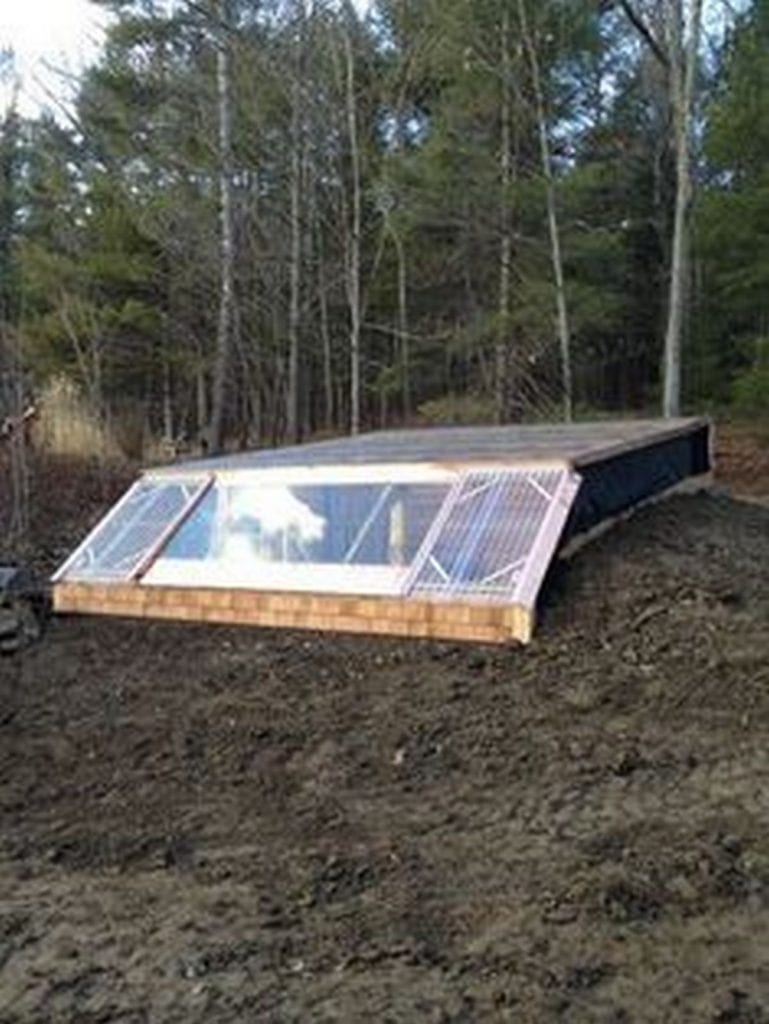
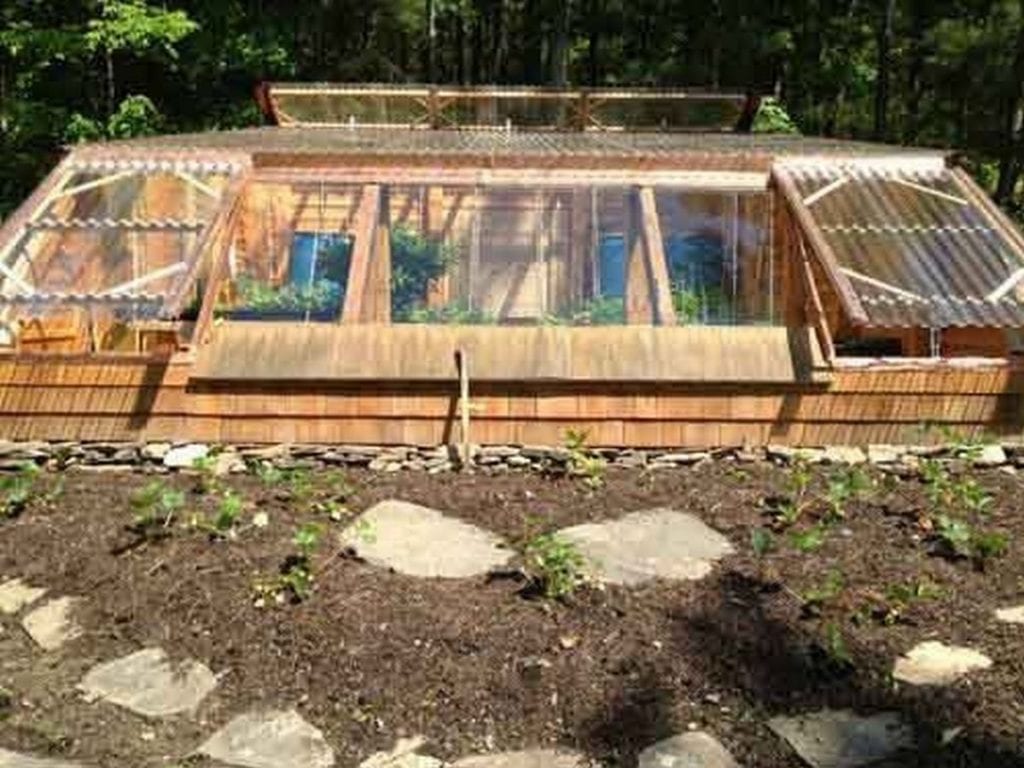
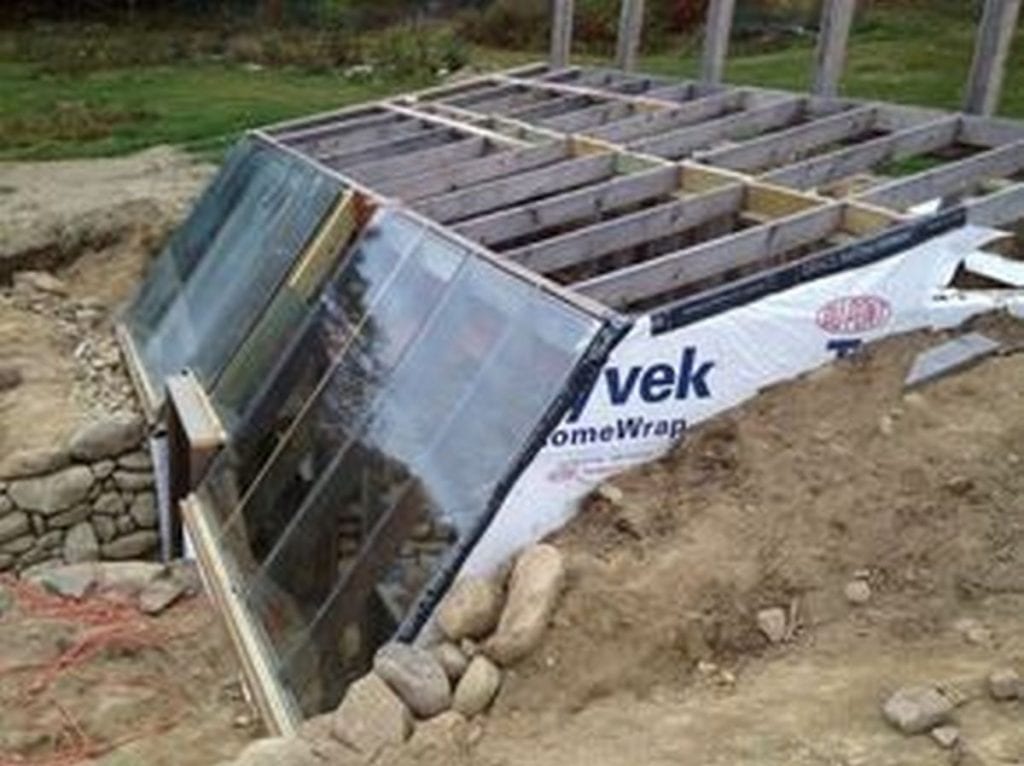

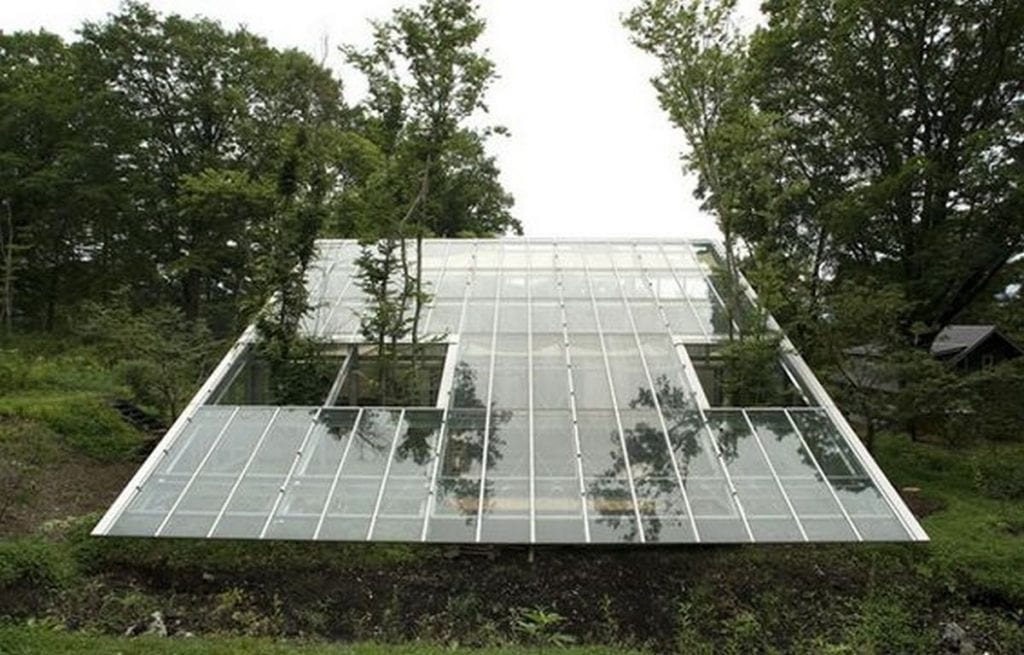

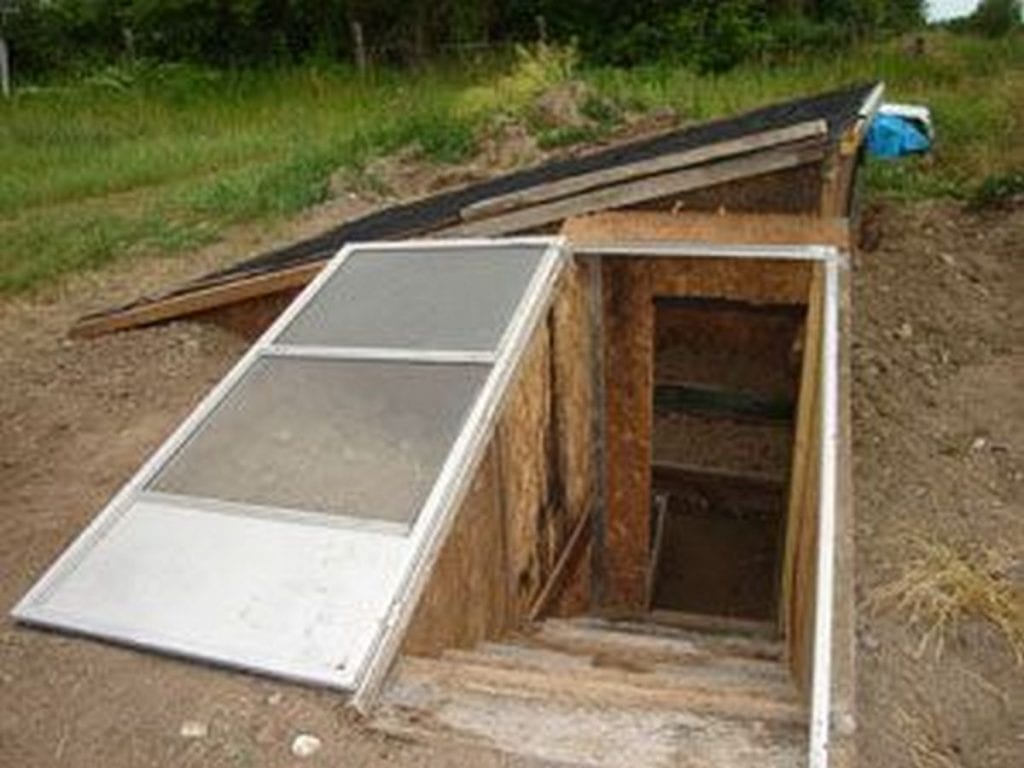
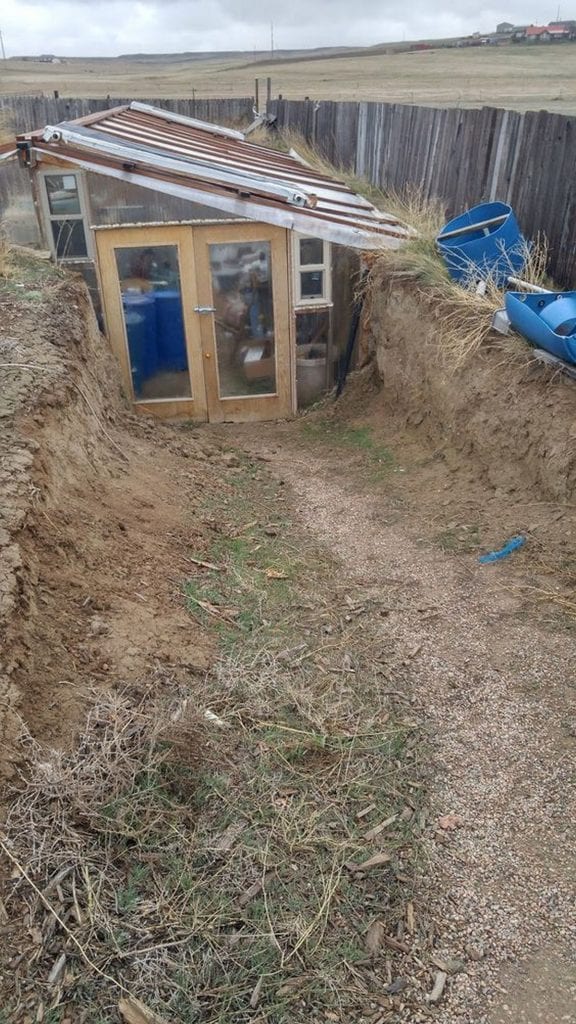

You can build your own earth-sheltered greenhouse. Grab a shovel and get to work!
Comparing Earth-Sheltered Greenhouses with Traditional Greenhouses
When it comes to choosing a greenhouse, gardeners have a variety of options. Two popular choices are earth-sheltered greenhouses and traditional above-ground greenhouses. Each type has its unique features, benefits, and challenges. Understanding the differences can help you decide which greenhouse best fits your gardening needs and goals. Let’s compare these two greenhouse types.
Construction and Design
Earth-Sheltered Greenhouses: are partially or fully buried in the ground, using the earth’s natural insulation to regulate temperature. They often incorporate passive solar design, with south-facing windows to maximize sunlight exposure and heat-absorbing materials like stone or mud brick to store heat.
Traditional Greenhouses: are fully above ground and made with frames of wood, metal, or plastic covered by a transparent material, such as glass or plastic sheets. They rely more on external heating sources and cooling mechanisms to maintain the right temperature.
Temperature Regulation
Earth-Sheltered Greenhouses: excel in maintaining a consistent temperature. The earth acts as a thermal mass, absorbing heat during the day and releasing it at night. This natural insulation can protect plants from extreme weather conditions and reduce the need for additional heating or cooling.
Traditional Greenhouses: can experience more significant temperature fluctuations, requiring heaters, fans, or cooling systems to keep plants healthy, especially in climates with hot summers or cold winters.
Energy Efficiency
Earth-Sheltered Greenhouses: are generally more energy-efficient than their traditional counterparts due to their use of the earth’s insulation and passive solar heating. This can lead to lower operating costs, as there’s less need for artificial heating or cooling.
Traditional Greenhouses: while effective in growing a wide range of plants, they often have higher energy costs. They depend more heavily on external energy sources for winter heating and summer cooling.
Cost and Construction Complexity
Earth-Sheltered Greenhouses: can be more expensive and complex to build initially due to the need for excavation and specialized construction techniques to prevent moisture issues and ensure structural integrity.
Traditional Greenhouses: are usually less costly up front and can be easier to construct, with many kits available that allow for DIY assembly. However, their operational costs can be higher due to energy use.
Suitability and Use
Earth-Sheltered Greenhouses: are ideal for gardeners looking to extend the growing season with minimal energy use, especially in regions with cold climates. They are well-suited for growing various crops year-round and can offer a more sustainable solution for long-term gardening.
Traditional Greenhouses: offer flexibility and convenience, making them suitable for various environments and gardening projects. They can be easily customized for different plants and are ideal for those looking to start greenhouse gardening without significant upfront investment.
Choosing between an earth-sheltered greenhouse and a traditional greenhouse depends on your gardening needs, climate, budget, and commitment to sustainability. Both options provide valuable benefits, but understanding their differences is key to making the best choice for your garden.
Design Considerations for Earth-Sheltered Greenhouses
Designing an earth-sheltered greenhouse requires careful planning and consideration of various factors to ensure it efficiently meets your gardening needs while being sustainable. These greenhouses use the earth’s natural insulation to maintain a consistent growing environment, making them ideal for extending the growing season with minimal energy input.
Let’s look at the key design considerations for creating an effective earth-sheltered greenhouse.
Location and Orientation
Sunlight Availability: The chosen site must receive plenty of sunlight, particularly during the winter months when the sun is lower in the sky, and days are shorter. Adequate sunlight is essential for photosynthesis, the process by which plants make their food, and for warming the greenhouse naturally.
Drainage Considerations
Good drainage is critical to prevent water from pooling around the structure, which could lead to moisture problems inside the greenhouse and potentially damage the structure over time. Sites with a slight slope are beneficial as they naturally allow water to flow away from the greenhouse.
South-Facing Slopes
In the Northern Hemisphere, south-facing slopes are the most desirable location for an earth-sheltered greenhouse. This orientation takes advantage of the sun’s path across the sky, ensuring that the greenhouse receives sunlight throughout the day. This maximizes plant growth potential and contributes significantly to heating the space naturally, reducing the need for supplemental heating systems.
Maximizing Sunlight Capture
Orienting the greenhouse so that its main glazing area faces south ensures that it captures the maximum possible amount of sunlight throughout the day. This orientation is particularly important during winter when the sun is lower in the sky, and daylight hours are reduced.
Design for Direct Sunlight
A south-facing orientation allows for direct sunlight to enter the greenhouse most of the day. This direct exposure is vital for maintaining an optimal growing temperature inside and ensures that plants receive a consistent level of light, which is crucial for their growth and development.
Considerations for Different Seasons
While a south-facing orientation is ideal for capturing sunlight, it’s also important to consider the changing angle of the sun throughout the year. In summer, the sun is higher in the sky, which could lead to overheating if not properly managed. Implementing adjustable shading solutions or having roof overhangs can help control the amount of summer sun entering the greenhouse, preventing overheating and ensuring a balanced internal climate year-round.
Insulation and Thermal Mass
Effective Heat Retention
The primary function of insulating materials in an earth-sheltered greenhouse is to retain heat absorbed during the day, minimizing heat loss during cooler periods. This is crucial for maintaining a consistent internal temperature, essential for plant health and growth.
Types of Insulating Materials
Additional insulating materials can enhance temperature stability beyond the natural insulation provided by the surrounding soil. Straw bales are an eco-friendly option that offers significant insulation due to their dense structure, which traps air. Insulated panels, made from materials such as polystyrene or polyurethane, are also effective. These panels are lightweight, easy to install, and have high R-values, indicating strong insulating properties.
Placement for Optimal Insulation
The strategic placement of these materials is important. Insulating the north wall more heavily can prevent heat loss, as this side receives the least sunlight. The roof and any exposed greenhouse parts should also be well-insulated to keep the warm air from escaping.
Storing Heat
Thermal mass acts as a heat reservoir within the greenhouse. During the day, materials with high thermal mass absorb and store heat from the sun. At night, when temperatures drop, these materials gradually release the stored heat, keeping the greenhouse warmer than the outside air.
Materials with High Thermal Mass
Water barrels, concrete, and stone are among the most effective materials for this purpose. Water barrels, in particular, are a popular choice due to their high specific heat capacity, which means they can absorb a lot of heat before their temperature rises. Placing water barrels or containers filled with water inside the greenhouse can significantly moderate temperature fluctuations.
Placement and Use
Placing these thermal mass materials is crucial for maximizing their benefit. Positioning them near the north wall or under planting tables where they can receive direct sunlight during the day allows them to absorb as much heat as possible. They should also be located where they won’t block sunlight from reaching the plants.
Ventilation and Humidity Control
Adequate Ventilation
Even in an insulated, earth-sheltered setting, proper ventilation is necessary to manage temperature and humidity levels. Consider installing operable windows, vents, or even mechanical ventilation systems to ensure fresh air circulation.
Managing Humidity
High humidity can lead to plant diseases and mold growth. Use moisture barriers and consider a drainage system beneath the greenhouse to control humidity. Ground cover plants or gravel can also help manage moisture levels.
Waterproofing and Drainage
Effective Waterproofing
Protecting the greenhouse from moisture infiltration is critical, especially since it’s partially underground. Use waterproof membranes and coatings on exterior walls and the roof to prevent water damage.
Drainage Solutions
Implementing a drainage system around the perimeter and beneath the greenhouse can prevent water from accumulating and affecting the structure. Gravel beds and drainage pipes can facilitate water movement away from the greenhouse.
FAQ on Earth-Sheltered Greenhouses
What is an earth-sheltered greenhouse?
An earth-sheltered greenhouse is a type of greenhouse that is built partially or entirely below the ground level. It uses the earth’s natural insulation to maintain a stable interior climate, making it more energy-efficient than traditional above-ground greenhouses.
How does an earth-sheltered greenhouse work?
Earth-sheltered greenhouses work by leveraging the thermal mass of the earth and insulating materials to absorb and store heat during the day, then release it at night. This helps maintain consistent temperatures, which can be ideal for plant growth year-round.
What are the benefits of an earth-sheltered greenhouse?
Benefits include reduced energy costs for heating and cooling, protection from extreme weather conditions, extended growing seasons, and the ability to grow a diverse range of plants. They also have a lower environmental impact compared to traditional greenhouses.
What materials are used for insulation in earth-sheltered greenhouses?
Common insulating materials include straw bales, insulated panels, and the surrounding soil itself. These materials help retain heat within the greenhouse, minimizing temperature fluctuations.
How important is the location and orientation of an earth-sheltered greenhouse?
Choosing the right location and orientation is crucial. A south-facing slope (in the Northern Hemisphere) that receives ample sunlight, especially during winter, is ideal. Proper orientation ensures maximum sunlight exposure, critical for the greenhouse’s efficiency.
Can I build an earth-sheltered greenhouse on flat land?
You can build an earth-sheltered greenhouse on flat land, but you may need to excavate to create the earth-sheltering effect and ensure proper drainage. Orientation towards the south (in the Northern Hemisphere) remains important for maximizing sunlight exposure.
What plants are best suited for an earth-sheltered greenhouse?
Various plants can thrive in an earth-sheltered greenhouse, including vegetables, herbs, and flowers that require consistent temperatures. Cold-weather crops like lettuce, kale, and broccoli do particularly well.
How do I ventilate an earth-sheltered greenhouse?
Ventilation can be achieved through manual or automatic vents placed at strategic points, operable windows, or mechanical ventilation systems. Proper ventilation is essential for controlling humidity and temperature.
Is an earth-sheltered greenhouse expensive to build?
The initial cost can be higher than that of a traditional greenhouse due to excavation and construction requirements. However, the long-term savings on heating and cooling costs can offset these initial expenses.
Can an earth-sheltered greenhouse be used in hot climates?
Yes, earth-sheltered greenhouses can be effective in hot climates as well. The earth’s insulation helps keep the interior cool during hot days, reducing the need for artificial cooling. Adjustments may be needed for ventilation and shading to optimize performance.
Conclusion
Earth-sheltered greenhouses present a sustainable and efficient solution for gardeners looking to extend their growing seasons. By leveraging the earth’s natural insulation and incorporating smart design choices like proper orientation and thermal mass, these greenhouses maintain stable temperatures, reduce energy costs, and offer protection against harsh weather.


